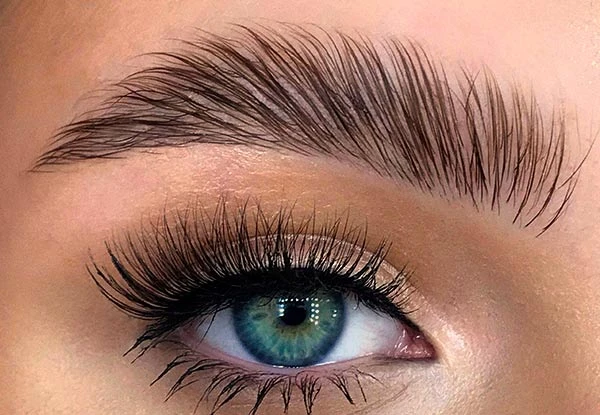
The bedroom is not just a place to rest, but a space where the psyche recovers after a day filled with impressions and stress. The colors we fill it with directly affect sleep quality, anxiety levels, and even relationships with partners. Our experts explained which shades truly help to relax and why color choice is about self-care.
How Color Works
Color affects us not only visually but also emotionally. The brain responds to shades as signals from the environment: cool tones calm, while warm tones energize. If the bedroom is decorated in overly bright colors, such as deep red or orange, the nervous system remains in a state of alertness even when the body wants to sleep. This leads to irritability, shallow sleep, and morning fatigue.
"At the same time, pale blue, gray-green, sandy, and lavender tones reduce anxiety levels and help the brain switch to 'rest mode.' Such shades psychologically provide a sense of safety — a key factor for full recovery," says psychologist Daria Tarasova.
Color and Relationships
The shade of the walls can also influence the atmosphere between partners. For example, a cool palette creates a sense of distance, especially if there is a lack of emotional warmth in the relationship. "In this case, it’s worth adding soft accents — beige, peach, muted pink, or terracotta details. They symbolize care and acceptance, thus helping to create coziness and a sense of closeness," Daria clarifies.
On the other hand, an excessive amount of pink, especially bright pink, can cause fatigue and irritation. The expert states: "Here, it’s important not to succumb to the stereotype that 'the bedroom should be romantic,' but to look for shades that truly resonate with you emotionally."
How to Choose a Color for the Bedroom
-
Listen to your body. Try to visualize how you fall asleep in the room. You are lying on the bed, surrounded by walls of a certain color; how do you feel? If there is a slight tension or a desire to 'leave' — the shade is not for you.
-
Avoid pure white walls. Despite the trendy minimalism, absolute white can create a feeling of sterility and emotional emptiness. It’s better to choose a 'warm white' — with a slight beige, peach, or cream tint. If you still want brightness — this can be achieved with color accents — rugs, paintings, lamps, etc. If the color becomes boring or unappealing, it can be easily changed.
-
Consider the lighting. The same color is perceived differently during the day and in the evening. Before painting the walls, apply test patches and see how they 'live' in natural and artificial light.
Color as a Way to Care for Yourself
Choosing the shade of the walls for the bedroom is not a matter of fashion, but a manifestation of your inner state. If you choose calm, harmonious tones, you are subconsciously striving for balance. And when you are drawn to bright or contrasting colors — perhaps you are lacking energy, joy, or sensations in life.
It’s important to remember: there is no 'universally correct' color. There is your personal response, your need for comfort, warmth, or space. When the bedroom reflects a person’s inner rhythm, it truly helps to rest, recover, and wake up feeling energized and ready to live.
"Color in the bedroom interior is not just a decorative element, but a powerful tool influencing psychological state and quality of rest," emphasizes interior designer, architect, and head of the author’s interior bureau Marina Pavlova.
Research in neuroaesthetics confirms: the shade of the walls directly affects the production of hormones that influence sleep and mood. Moreover, the perception of color is deeply individual and depends on many factors — from the room’s lighting to a person’s personal associations.
Color Psychology: What Works in the Bedroom
Blue and green shades are traditionally considered the most favorable for relaxation zones. Deep blue-green tones, reminiscent of the depths of the sea, help lower blood pressure and slow the heart rate. Neutral gray-blue options create a sense of coolness and calm, which is especially relevant for bedrooms facing south. However, there are no universal solutions.
"Bedrooms with a northern orientation benefit from warm tones — from cream to terracotta. Such colors compensate for the lack of natural light and create a sense of coziness. It’s important to understand: even the trendiest shade may not work in a specific space due to its proportions, lighting, or combination with other interior elements," Marina clarifies.
Don’t Blindly Follow Trends
The most common mistake is following trends without considering the individual characteristics of the space and the psychology of its inhabitants. The designer states: "A prime example is the widespread use of deep saturated shades in small bedrooms. Dark blue or emerald walls, which look stunning in glossy magazine photos, may visually reduce an already small space in reality."
Another common mistake is ignoring the psychological profile of the bedroom owner. For people with heightened anxiety or sleep problems, saturated stimulating colors can exacerbate existing issues, even if these shades are considered trendy this season.
A Practical Approach to Choice
In working on the bedroom interior for a couple with different chronotypes (she is a 'lark,' he is an 'owl'), there is an interesting solution. Instead of a compromise neutral shade for all walls, make one accent wall — behind the headboard — painted in a deep muted blue. The other walls can be done in a light gray-beige. This solution is likely to satisfy both: the morning light, reflecting off the light walls, helps the 'lark' wake up more easily, while the blue accent creates a sense of coziness and security for the 'owl' in the evening.
A well-chosen color scheme for the bedroom is an investment in sleep quality and, consequently, health. Research shows that people sleeping in rooms with a well-thought-out color scheme report a 27% improvement in sleep quality and a 21% reduction in stress levels.
Instead of following trends when choosing wall colors, it is better to focus on the individual needs of the residents. Additionally, the color solution for the bedroom should consider not only current preferences but also the long-term perspective — the psychological perception of color changes more slowly than fashion trends.















Leave a comment